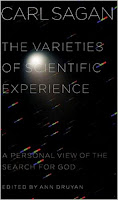Bambi (1923)
Felix Salten (1869-1945)
293 pages
I recently received, as a gift for my children, a copy of the book Bambi, by the Austro-Hungarian author Felix Salten. Although I had only ever known the Disney movie version and associated story books, I wasn’t particularly surprised to learn that there lay behind it all an earlier novel.And, as I began reading the story to them, the opening chapters proceeding much like I dimly remembered the movie, with the newborn Bambi’s wide-eyed wonder at the world of the forest, as he discovered it with his mother and other animal friends. I recalled that a dark turn lay waiting in the story – no spoiler here for those who might not be familiar – but it became clear that my kids were aware of it too, so I wasn’t too worried about its impact.
But already well before that climactic moment, Bambi finds the frolicking and enchantment of the forest giving way to starker realities. Deadly encounters with “Him” – a hunter – make concrete what had been for Bambi and his young friends the previously amorphous warnings of danger from their parents. And He is far from the only predator in the forest; Bambi comes to witness, and initially struggle to accept, animals hunting others, in quite graphic terms. Tennyson’s “nature, red in tooth and claw” indeed.
It gradually becomes clear, then, that in Bambi Salten wrote not a children’s book but a bildungsroman, one both tender and bracing. As Bambi grows up, he continues to discover new wonders in the forest, but also finds to his dismay his mother leaving him on his own for ever longer periods of time; with the changing of the seasons, he suffers through his first winter, with the constant struggle to find food a radical shift from the seemingly boundless bounty of the summer; and, the mysterious predators that hunt on two legs continue to plague him and the other animals of the forest. To help Bambi find his way, an elder stag, a Prince, repeatedly seeks him out to give him laconic chidings and advice, before just as abruptly disappearing and leaving him to ponder their meaning.
Having read translations of the original Grimm’s Fairy Tales, in which the stories of Cinderella, Snow White and others were much darker, and often bloodier, than their Disney interpretations in which mild tension gives way to lived happily ever after, I perhaps should not have been surprised to encounter something similar in the case of Bambi. And, although it can be easy to write-off a story in which the animals talk as written for children, no one does so, for example, with George Orwell’s Animal Story. By giving voice to Bambi and other life in the forest, Salten has written an engaging coming-of-age story, heart-warming in its portrayal of the discovery of the beauty of the world, but also heart-rending in its recognition that with that beauty come harsh realities.
Salten crystalizes this enigmatic mystery of the cycle of life in perhaps the most poignant scene in the novel, one in which Bambi doesn’t actually make an appearance. In a brief chapter – a vignette really – as autumn deepens toward winter, two leaves in a great oak attempt to make sense of what is happening to them, having watched so many other leaves fall out of the tree. They wonder who’s next and what falling will mean, despairing of the unknown to come, until one attempts to cheer the other up:
Let’s remember how beautiful it was, how wonderful, when the sun came out and shone so warmly that we thought we’d burst with life. Do you remember? And the morning dew, and the mild and splendid nights… (109)
Other notes and information:
Bonus review, from my daughter, including her drawing of Bambi:
BAMBI by Felix SaltenCharacters:Bambi is the protagonistHim (man) is the antagonistFaline (soulmate) and Gobo, siblings, friend hare and owl are some friends of the protagonist, Bambi.Something that I liked about the story is it's very realistic to the circle of life. Something that surprised me is the leaves speaking to each other. it made me feel like some questions can't be answered. I wrote that because the leaves wonder what will happen when they fall off their tree but that question will never be answered until they feel it for themselves.
Have you read this book, others by this author, or even similar ones by other authors? I’d enjoy hearing your thoughts.
Other of my book reviews: FICTION Bookshelf and NON-FICTION Bookshelf



